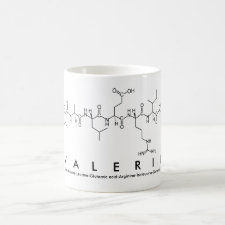Authors: Varenne F, Kadhirvel P, Bosman P, Renault L, Combès A, Pichon V
Article Title: Synthesis and characterization of molecularly imprinted polymers for the selective extraction of oxazepam from complex environmental and biological samples.
Publication date: 2021
Journal: Analytical and Bioanalytical Chemistry
DOI: 10.1007/s00216-021-03268-w
Abstract: Oxazepam, one of the most frequently prescribed anxiolytic drugs, is not completely removed from wastewater with conventional treatment processes. It can thus be found at trace levels in environmental water, with human urine constituting the major source of contamination. This study focused on the development and characterization of molecularly imprinted polymers (MIPs) for the selective solid-phase extraction of oxazepam at trace levels from environmental water and human urine samples. Two MIPs were synthesized, and their selectivity in pure organic and aqueous media were assayed. After optimizing the extraction procedure adapted to a large sample volume to reach a high enrichment factor, the most promising MIP was applied to the selective extraction of oxazepam from environmental water. Extraction recoveries of 83 ± 12, 92 ± 4 and 89 ± 10% were obtained using the MIP for tap, mineral and river water, respectively, while a recovery close to 40% was obtained on the corresponding non-imprinted polymer (NIP). Thanks to the high enrichment factors, a limit of quantification (LOQ) of 4.5 ng L-1 was obtained for river water. A selective extraction procedure was also developed for urine samples and gave rise to extraction recoveries close to 95% for the MIP and only 23% for the NIP. Using the MIP, a LOQ of 357 ng L-1 was obtained for oxazepam in urine. The use of the MIP also helped to limit the matrix effects encountered for the quantification of oxazepam in environmental samples and in human urine samples after extraction on an Oasis HLB sorbent
Author keywords: Benzodiazepines, Molecularly imprinted polymers, Solid-phase extraction, LC-MS, MS, Environmental water samples, Human urine samples



Join the Society for Molecular Imprinting

New items RSS feed
Sign-up for e-mail updates:
Choose between receiving an occasional newsletter or more frequent e-mail alerts.
Click here to go to the sign-up page.
Is your name elemental or peptidic? Enter your name and find out by clicking either of the buttons below!
Other products you may like:
 MIPdatabase
MIPdatabase









